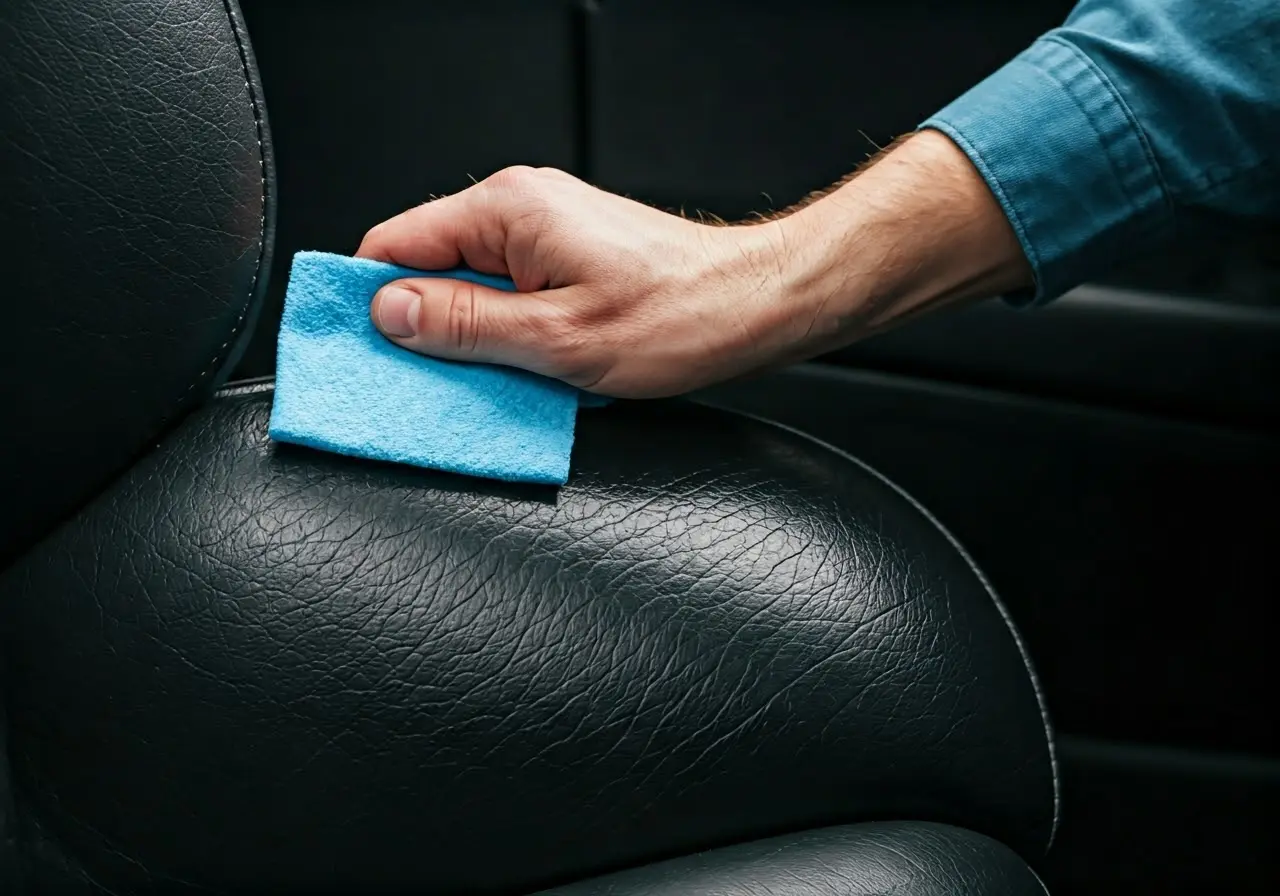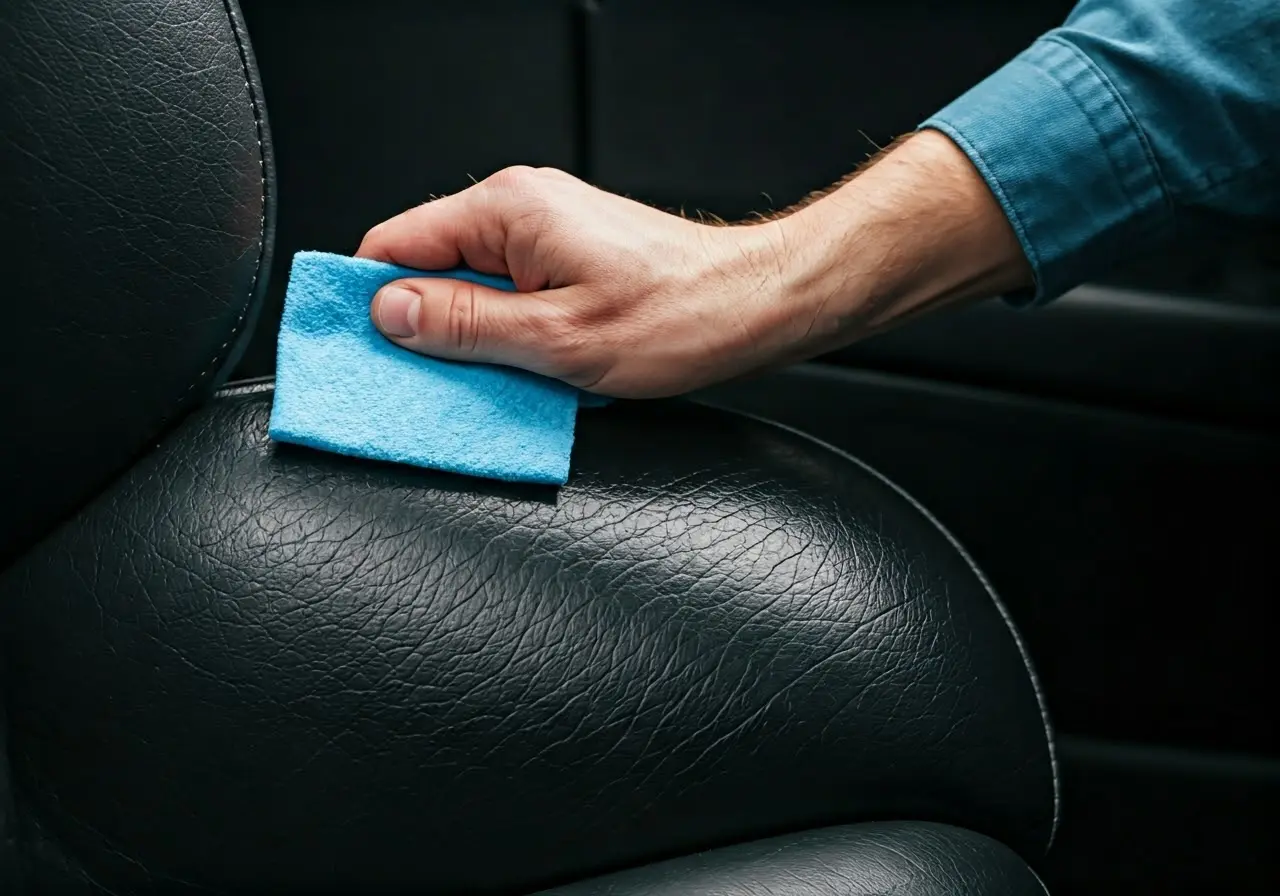

Leather Seat Cleaner Tips for a Polished and Protected Interior
Keeping your car’s leather seats looking pristine is easier than you think. A bit of knowledge and the right products can make all the difference. Whether you’re dealing with everyday wear or unexpected spills, we’ve got the tips you need to keep your car’s interior polished and protected.
Understanding Your Leather Type
Before diving into cleaning, it’s critical to know what type of leather your car seats are made of. Different types demand different care strategies. From full-grain to corrected-grain, understanding your leather ensures you choose the proper cleaning products and methods.
Leather seats add a touch of luxury and comfort to any vehicle, but not all leather is the same. Consider the difference between full-grain leather, which is made from the top layer of the hide and is often seen as high-end, and corrected-grain, which is sanded to remove imperfections. Each type requires specific care. Understanding the differences can help tailor your approach to cleaning and maintaining your seats, enhancing both their appearance and longevity.
Choosing the Right Leather Seat Cleaner
Not all cleaners are created equal. It’s important to select a cleaner that complements your leather type while removing dirt and grime effectively. Look for pH-balanced, non-toxic options that offer both cleaning and conditioning properties.
When picking a leather seat cleaner, the ingredients matter. Opt for those with natural components like aloe or lanolin, which help in maintaining the natural oils of the leather without causing harm. Steer clear of products containing alcohol or harsh chemicals as they may dry out the leather and lead to cracking over time. A proper cleaning routine starts with the right product choice, setting a strong foundation for maintaining your car’s luxurious feel.
Another essential aspect is checking for any additional conditioning agents in your leather cleaner. These additives are key in restoring the leather’s oils, which can be stripped away during cleaning. By selecting a cleaner with these compounds, you can combine cleaning and conditioning in one step. This efficiency not only saves time but also ensures a deeper, more thorough clean every time you attend to your car’s interior.
Step-by-Step Leather Cleaning Process
Let’s break down the cleaning process into simple steps. Start with a thorough vacuuming, apply the cleaner with a soft cloth, and ensure you wipe off any excess. Always test products on an inconspicuous area first to avoid surprises.
Begin by removing the loose dirt and debris with a vacuum cleaner equipped with a soft brush attachment. This preliminary step avoids scratching the leather when applying liquid cleaners. Next, dampen a microfiber cloth with lukewarm water for an initial wipe-down, removing general surface residues. Once this is done, apply a small amount of your chosen leather cleaner to a clean cloth, gently working it into the leather in circular motions. This technique helps lift residues without stressing the material.
After applying the cleaner, it’s crucial to remove any leftover residue to prevent drying or stickiness. Use a separate clean, dry cloth to wipe down the seats, then allow them to air-dry naturally. Patience is vital here; rushing the drying process can lead to unwanted wrinkles or spots. To finish, assess the job under good lighting to ensure a thorough clean, making any necessary touch-ups. This careful approach promises a refreshingly pristine seating area in your vehicle.
Maintaining Leather Condition for Longevity
Regular conditioning is key to preserving the leather’s natural oils. Use a high-quality leather conditioner every few months to prevent cracking and fading. This step ensures your seats remain supple and vibrant over time.
Leather is much like our skin; it needs nourishment to stay healthy. To condition leather, choose a high-quality product that offers moisturization without greasy residue. Apply the conditioner with a clean, dry cloth, allowing it to absorb for a few minutes before buffing the surface. The end result is a sheen of natural gloss paired with the luxurious texture of well-preserved leather. Don’t forget to focus on often-neglected spots like the sides and back of the seats for consistent results.
Protecting Your Leather from Future Damage
Prevention is always better than cure. Using seat covers or protective sprays can shield your leather from UV rays and spills. Incorporate these protective measures into your routine to keep your interior in mint condition.
Parking in shaded areas or using sunshades can significantly reduce UV exposure, which is one of the biggest threats to leather longevity. If covers aren’t your thing, consider specialized UV-protection sprays that offer a transparent shield without concealing the leather’s texture and color. Spills are another common issue; water-repellent treatments can add a protective layer, allowing for quick cleanup before stains set in. Invest in these preventive measures to enjoy a polished, well-maintained interior with minimal effort.
Making Leather Care an Easy Routine
With these tips in your back pocket, maintaining your leather seats is not only manageable but enjoyable. Regular maintenance and the right cleaning techniques ensure your car’s interior is always in top shape. Embrace these strategies, and enjoy the benefits of a beautifully maintained vehicle. For more information on keeping your car in perfect condition, don’t forget to check out our homepage.
Latest Posts


Discover the Best Window Tint Options for Your Car

Why Car Detailing Cost is an Investment in Your Vehicle’s Longevity

15 Tips for Maintaining Your Car After Applying the Best Ceramic Coating

10 Reasons Why Car Detailing Greensboro Lovers Adore Ceramic Coating


